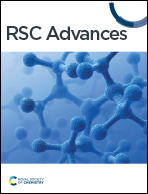Fabrication of Cu@Sn TLPS joint for high temperature power electronics application
Abstract
In this study, a novel Cu@Sn TLPS joint was fabricated for high-temperature power electronics application. Cu@Sn core–shell composite powder was firstly prepared by a methylate electroplating method, and then pressed into a preformed sheet. The Cu@Sn preform was reflowed at 250 ∼ 280 °C for 40 min under the pressure of 0.1 × 10−3 MPa, and the resulting bondline can withstand high temperatures up to 600 °C. During the process, the Sn layer was transformed to Cu3Sn, and the Cu3Sn surrounded the outside of the residual Cu particles. The joint characteristics were controlled by size gradation of Cu particles, the ratio of Cu/Sn, preform forming pressure and TLPS process. The joint shear strength was no less than 48 MPa after aging at 400 °C for 1000 h. Young's modulus and hardness were 98.35 GPa and 2.62 GPa, respectively, which are much lower than the pure Cu3Sn joint. The electrical resistivity and thermal conductivity of the joint were 5.1 μΩ cm and 148 W m−1 K−1, respectively. It is superior to pure Cu3Sn joints and the other Cu/Sn system TLPS joints. The high shear strength, high thermal conductivity and high melting temperature demonstrate that Cu@Sn TLPS joint is a promising interconnect technology for high power density modules.



 Please wait while we load your content...
Please wait while we load your content...